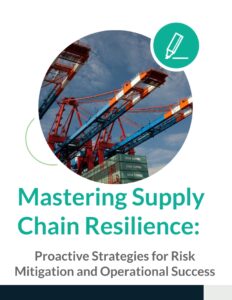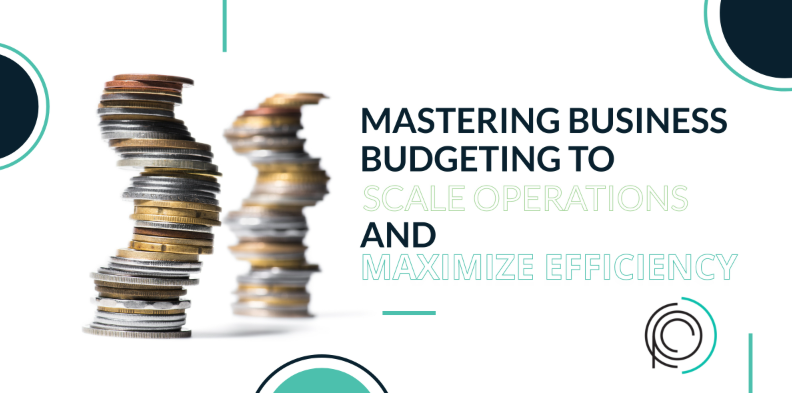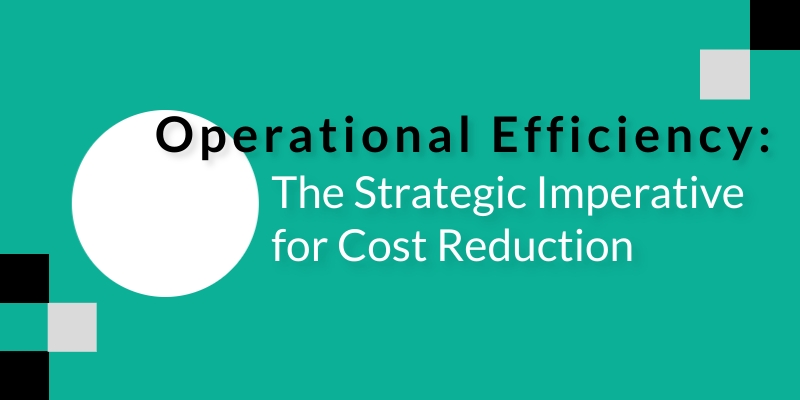Budgeting is a fundamental aspect of any organization, serving as a critical blueprint that can either make or break its success. It involves allocating financial resources effectively to ensure all departments can operate smoothly and meet their goals. You might be wondering, what is the connection between operations and budgeting, and finance? The answer lies in the fact that operational efficiency directly impacts financial performance. When operations are well-managed and aligned with budgetary constraints, organizations can optimize resource use, reduce waste, and ultimately enhance profitability. Therefore, a strong understanding of budgeting is essential for anyone involved in operations, as it helps to create a cohesive strategy that drives the organization toward its objectives. In this article I will guide you through effective strategies for business budgeting, ensuring you streamline operations, cut costs, and enhance your overall efficiency.
The Importance of Streamlined Operations
Streamlining internal operations is essential for organizations seeking to enhance efficiency and productivity. By optimizing processes and eliminating unnecessary steps, organizations can significantly cut operating costs while reallocating resources to more impactful areas. This approach boosts overall performance and ensures that your team remains focused on tasks that truly matter, fostering innovation and driving business growth. Emphasizing efficiency allows companies to respond more swiftly to market demands and stay competitive.
Reducing Operational Costs
Streamlining operations not only minimizes waste but also eliminates redundancies that can drain resources. Efficient processes are vital for any organization striving to maximize profitability. Whether you see AI as a potential liability or a valuable ally, embracing technology can greatly enhance your operational effectiveness. By automating routine tasks with AI tools, businesses can achieve significant savings—up to 30% in costs and 50% in time. This approach enables teams to concentrate on more strategic initiatives instead of getting mired in repetitive tasks. Such a shift not only boosts efficiency but also encourages innovation and growth, positioning your organization advantageously in a competitive, demanding market.
Focusing on Core Tasks
By eliminating mundane tasks, employees can focus on high-priority projects. This improved allocation of time leads to better productivity and innovation. A study by Harvard Business Review found that companies focusing on core activities have 20% higher productivity rates. “…many firms investing in technology are not seeing its benefits. McKinsey research finds that firms typically realize only about 25% to 30% of the expected value of their digital transformations. Much of the shortfall comes from not properly updating the firm’s strategy and business model to take advantage of new digital strengths.” We recommend starting by mapping your current processes to gain a clear understanding of your operations. This will help identify areas for improvement using the tools and resources you already have.
Saving Manpower
Human capital is arguably our most valuable asset as well as our largest expense. Streamlining operations reduces unnecessary workloads, enabling teams to concentrate on their core tasks and responsibilities. By minimizing redundancies and eliminating inefficiencies, organizations can achieve a more effective allocation of their human capital. This strategic approach not only improves employee morale but also allows team members to feel less frustrated and more empowered, ultimately enhancing the quality of their work.
If you’re curious about how streamlined operations enhance employee morale, the key lies in enabling individuals to focus on their strengths instead of becoming burdened with tedious administrative tasks. Mundane tasks unrelated to their expertise can lead to job dissatisfaction over time. By addressing issues that can be solved through software or improved processes, organizations can foster greater job satisfaction and boost productivity. Ultimately, these positive changes benefit the entire organization.
Scaling Your Business Seamlessly
Scaling a business requires more than simply establishing ambitious goals and expanding operations. It involves a comprehensive strategy that balances growth with sustainability. Too often, I see organizations pursue significant strategic goals without adequately addressing the strain on their existing resources, such as workforce, finances, and infrastructure. This oversight can lead to burnout among employees, increased operational costs, and ultimately, hindered progress. To ensure effective scaling, companies must not only set clear objectives but also invest in their foundational resources to support long-term success and resilience as they scale.
Preparing for Growth
Allocate funds where they’re needed most in the business rather than impulsively starting new initiatives. By carefully assessing and anticipating costs associated with growth—such as new hires, expanded facilities, or necessary equipment upgrades—you can strategically position your organization to avoid potential financial pitfalls. It’s crucial to analyze current operational demands and future goals to ensure resources are directed effectively. Forbes highlights that proper planning and informed budgeting can significantly reduce scaling risks, helping businesses thrive while navigating the complexities of growth.
Investing in Technology
Investing in technology is crucial for seamless scaling. The right tools that integrate various business functions can enable smooth transitions during growth phases, minimizing disruptions and ensuring that operations remain efficient.
Enterprise Resource Planning (ERP) software can unify disparate business processes into a cohesive system. By streamlining everything from inventory management to customer relationship management, ERP systems can significantly improve operational efficiency according to Gartner. This helps businesses save time, reduce costs, and enhances decision-making capabilities by providing real-time data insights. As companies look to expand and adapt, investing in the appropriate technology becomes a necessity for long-term success.
Creating a Scalable Model
Budgeting for scalability is essential for any growing business. By creating robust frameworks, you ensure that your operations can adapt seamlessly to increased demand. This proactive approach allows you to accommodate more customers or clients without compromising on service quality or performance. It involves not just financial planning but also investing in the right tools and resources that will enable your team to maintain high standards even as your workload expands. Ultimately, this strategic planning positions your business for sustainable growth and long-term success.
Customer Onboarding and Retention
Improving customer onboarding and retention is essential for sustainable growth. Effective budgeting ensures that resources are allocated towards creating a positive customer experience.
Enhancing Onboarding Processes
Investing in user-friendly onboarding processes reduces churn rates. A well-budgeted onboarding plan includes training, resources, and support that help customers understand your product or service quickly. According to Wyzowl, effective onboarding can improve customer retention by 50%.
Ongoing Customer Support
Budget for ongoing customer support. Ensuring customers have access to helpful resources and responsive support teams increases satisfaction and loyalty.
Building Long-Term Relationships
Invest in CRM systems to track customer interactions and preferences. This data helps tailor services to meet customer needs, fostering long-term relationships and repeat business.
Employee Engagement and Retention
Effective budgeting also impacts employee engagement and retention. By allocating resources to attract and retain top talent, enterprises can avoid the costly cycle of hiring and firing.
Attracting the Right Talent
Budgeting for competitive salaries and benefits ensures you attract the best candidates. According to Glassdoor, companies that invest in their employees see a 25% reduction in turnover rates.
Continuous Learning and Development
Allocate funds for employee training and development programs. This investment enhances skills and keeps employees motivated. LinkedIn reports that 94% of employees would stay longer at a company that invests in their career development.
Creating a Positive Work Environment
Budget for initiatives that foster a positive work environment, such as wellness programs and team-building activities. A positive workplace boosts productivity by 31%, according to Gallup.
Cutting Edge Solutions for Budgeting
Advanced Analytics
Leverage advanced analytics to gain insights into financial trends and optimize budgets. Predictive analytics help forecast future expenses and revenue, ensuring more accurate budgeting.
Cloud-Based Solutions
Adopt cloud-based financial management systems for real-time tracking and reporting. These solutions offer flexibility and scalability, making it easier to adjust budgets as your business grows.
Collaborative Budgeting Tools
Use collaborative tools that allow multiple stakeholders to contribute to the budgeting process. This inclusivity ensures all departments are aligned with financial goals and helps identify potential issues early.
Case Studies of Successful Budgeting
Case Study 1: Amazon
Amazon is known for its meticulous budgeting practices. By focusing on efficient logistics and innovative technologies, Amazon has maintained its competitive edge while scaling globally.
Case Study 2: Apple
Apple’s budgeting strategy emphasizes research and development, ensuring continuous innovation. This commitment to R&D has cemented Apple’s position as a market leader.
Case Study 3: Google
Google invests heavily in employee engagement and development. Their budgeting practices include extensive training programs, which have resulted in high employee retention and satisfaction rates.
Common Budgeting Mistakes to Avoid
Overlooking Small Expenses
Small expenses can add up and impact your budget significantly. Track every expenditure to avoid budget overruns.
Ignoring Market Trends
Stay updated on market trends to make informed budgeting decisions. Ignoring market shifts can lead to missed opportunities and financial losses.
Failing to Reassess Budgets
Regularly reassess budgets to ensure they align with current business goals and market conditions. Static budgets can hinder growth and adaptability.
Practical Tips for Effective Budgeting
Set Clear Goals
Define clear financial goals and align your budget accordingly. This direction ensures that every dollar spent contributes to achieving your objectives.
Monitor Regularly
Regularly monitor and review your budget to identify discrepancies and make necessary adjustments promptly.
Use Technology
Leverage technology for efficient budgeting. Use software that offers real-time tracking, automated reports, and predictive analytics.
Conclusion
By adhering to these guidelines and leveraging advanced tools, you can transform your business budgeting into a powerful catalyst for growth and efficiency. This comprehensive approach will not only help you manage finances effectively but also position your organization for sustained success.
Remember, effective budgeting is an ongoing process that requires regular reassessment and adaptation. Stay proactive, keep learning, and continue optimizing your budgeting practices to achieve your business goals.
For more personalized advice, consider consulting with experts who can tailor budgeting strategies to your unique business needs.







